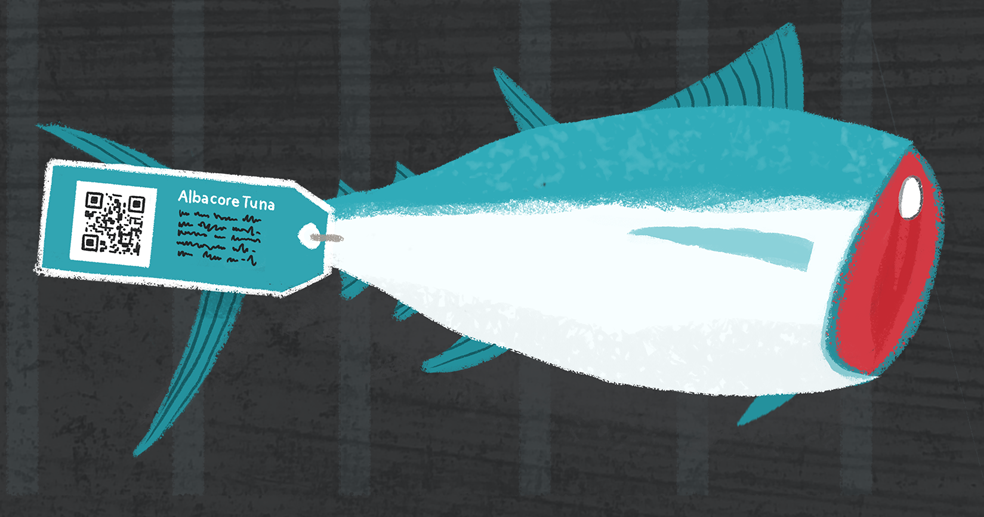
Part 3: Tracing Seafood in the Supply Chain
We know them from grocery store checkouts—barcodes and QR codes are ubiquitous on retail shelves. What if that same technology could help us trace our fish? From seafood suppliers and producers to retailers and chefs, the power of technology to promote traceability and storytelling is catching on.
In part 3 of our 4-part series on how technology can help save the seas (with a little help), we turn our attention to innovations that help trace seafood through the supply chain. Using barcodes, scanners, software, and even edible QR codes, these entrepreneurs are helping keep information paired with seafood as it travels from water to plate. Read on:
- Future of Fish’s Traceability Technology Pod Member and Norpac’s Tom Kraft developed one of the first barcode systems for tracing individual fish, which assigns each fish a unique serial number and a set of critical tracking information as soon as it’s landed or received. As the fish moves through the supply chain, the information stays with it—even after the fish is broken down into filets or steaks. This helps prevent seafood fraud and lets customers know that they can trust the provenance of the fish they’re buying.
- San Diego-based sushi chef Rob Ruiz of Harney Sushi has created edible QR codes to serve on his sushi, which diners can scan to find out about the provenance of their fish. Southern California has one of the highest rates of mislabeled fish in the US—52%—but initiatives like the edible barcodes are helping win diner trust. “People are ordering more straight fish because we’ve given them more confidence” says Ruiz. Since April when Ruiz introduced the edible QR codes, sales of sashimi have nearly doubled, indicating that diners are excited to buy “Storied Fish” when they can find it.
- Scannable seafood isn’t just for restaurant diners—it’s starting to proliferate in the shelves and freezer cases at your local supermarket too. Salty Girl Seafood and Fishpeople both let customers “trace your fish” by entering a code from the seafood package into their website. The seafood codes are linked directly to the story of the fish, with info on where it was caught, the vessel it came from, and sustainability info on the species. Other companies like ThisFish also have scannable packaging, with the added feature of cans that are personally branded by the specific fisherman that caught the it. You can even send the fisher a thank you note!
We’ve seen how technology can help identify fish and enforce fishing regulations, so it’s no surprise that tech innovation can also help inform consumers and prevent fraud. While tracing and tracking technology is improving in leaps and bounds, increasing the volume of traceable “storied” fish still requires collaboration between technology companies, regulators, and seafood supply chains. Solving for traceability isn’t just a technology challenge: it’s also a people challenge.
So what? Let us know how you have seen technology move forward. Do you have a positive story from successful implementation? Where are you stuck? Send us a note at info@futureoffish.org and look out for next week’s post to learn how technology can help trace seafood through the supply chain.
image credit: National Park
Published Jul 27, 2016




